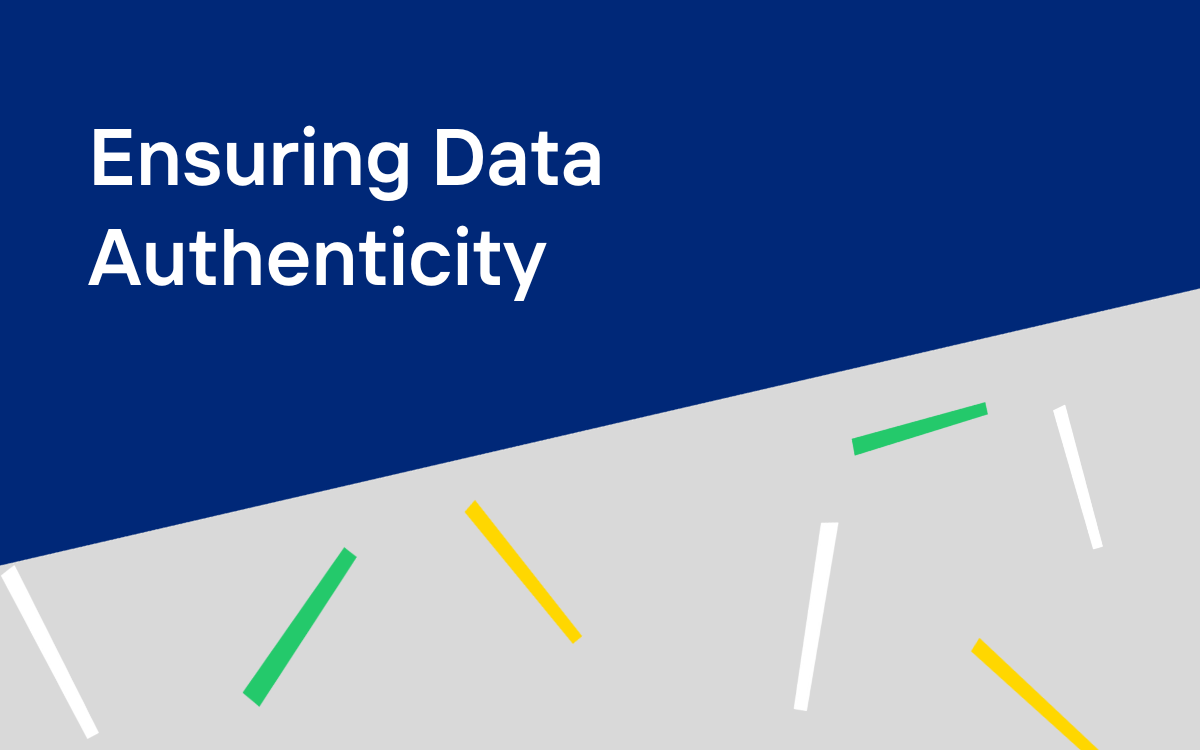In today’s interconnected digital landscape, APIs have become indispensable components for the seamless exchange of data between applications. The power of APIs lies in their ability to facilitate automation and integration, but this also exposes them to potential security vulnerabilities. As organizations increasingly rely on APIs, it is crucial to prioritize API security and implement robust protection measures to defend against threats, particularly API vulnerability.
Key Takeaways
- Organizations must recognize the importance of API security and take proactive steps to ensure its safety, such as staying informed about common vulnerabilities, implementing strong authentication/authorization mechanisms, and regularly monitoring/patching vulnerabilities.
- Multi-Factor Authentication (MFA), OAuth & JWT are widely used protocols for access control. Data protection measures include encryption & input validation techniques like sanitization & allowlists.
- Kasada provides a comprehensive API security solution aimed at detecting and blocking malicious automation used to attack enterprise APIs.
Understanding API Vulnerabilities

API vulnerabilities arise when user-provided data isn’t appropriately parsed and validated before request processing, potentially triggering injection attacks that compromise sensitive data. With the increasing prevalence and expanding roles of APIs, adopting API security best practices has become imperative for organizations to mitigate vulnerabilities and guard their valuable data resources.
The consequences of API vulnerabilities can be severe, ranging from reputational damage to data theft and financial losses. Thus, comprehending common API vulnerabilities and threats is vital for a proactive approach to API security, safeguarding your organization’s digital assets and operations.
The Role of APIs in Modern Applications
APIs, or Application Programming Interfaces, provide an interface allowing applications to communicate. Through APIs, data can be exchanged and commands can be responded to. They serve as the backbone of modern interconnected applications, facilitating smooth data exchange between different software components. Nevertheless, this widespread connectivity also makes APIs vulnerable to potential security risks, necessitating access restriction to only authorized users.
In the face of the escalating importance of APIs in modern applications, API developers need to have a firm grasp of common API vulnerabilities and threats. The adoption of robust security measures like:
- multi-factor authentication
- OAuth and JWT for access control
- data minimization
- encryption
- input validation
Implementing robust security measures may shield organizations from attempts to gain unauthorized access, data theft, and other security threats.
Common API Vulnerabilities and Threats
APIs share vulnerabilities with any other resource accessible online, which can lead to compromises in API security if not properly addressed. Some common API vulnerabilities, also known as API security flaws, include:
- Inadequate authentication
- Broken object-level authorization
- Excessive data exposure
- Injection attacks
Staying updated about common API vulnerabilities and threats allows organizations to take a proactive stance in implementing security measures for their API protection. This encompasses practices like:
- Strong authentication
- Rate limiting
- Data minimization
- Input validation
Compliance with these security best practices significantly minimizes the risk of unauthorized access and other API security vulnerabilities, guaranteeing the safety and integrity of their applications, without compromising API security.
The Role Bots Play in API Attacks
Like any use of malicious automation during any type of attack, bots are leveraged for their blend of ease of use, sophistication, and cost-effectiveness. Bots allow adversaries to launch API attacks at scale. Carrying out malicious actions far faster than a human could. If APIs are not protected against automation it leaves them vulnerable to attackers’ favorite tool.
Strengthening Authentication and Authorization
Robust authentication and authorization mechanisms are crucial for maintaining API security, as they prevent unauthorized access to APIs. Ensuring that only authorized users can access the APIs is essential for protecting sensitive data and minimizing the risk of security vulnerabilities.
Organizations should utilize API keys to identify users, but not rely on them for authentication or authorization. Instead, implementing measures such as multi-factor authentication (MFA), OAuth, and JWT can help ensure that only valid credentials are granted access to APIs. Prioritizing strong authentication and authorization enables organizations to efficiently lessen the risk of unauthorized access, data breaches, and other security threats.
Implementing Multi-Factor Authentication (MFA)
Multi-Factor Authentication (MFA) is a security best practice that improves API security by requiring users to provide multiple forms of authentication, such as a password and a security code, before accessing the API. This bolstered identity verification assurance reduces the risk of unauthorized access or data breaches and can be implemented via various API providers like OneLogin and Auth0 that provide API endpoints for managing user MFA.
Using OAuth and JWT for Access Control
OAuth and JWT are widely used protocols for managing API access control, guaranteeing that only authorized users gain access to protected resources.
OAuth is an industry-standard protocol for authorization that allows users to grant third-party applications access to their resources without sharing their credentials, making it a secure way to handle API requests.
In API authentication, OAuth operates by:
- Obtaining OAuth 2.0 credentials from the API provider
- Obtaining an access token from the authorization server
- Utilizing that access token to access protected resources hosted by the API server.
On the other hand, JWT (JSON Web Token) is employed for authentication and exchanging information. It is a lightweight and self-contained token that can be used for APIs and various applications. JWTs are often utilized in API authentication to verify and trust the information provided by the token, making them a valuable tool for access control in API security.
Protecting Data and Preventing Excessive Exposure
Data protection and exposure minimization are crucial aspects of API security. Data minimization, the practice of restricting data collection, usage, and retention to what’s absolutely necessary for a specific purpose, is vitally important for the protection of sensitive information and regulatory compliance with data protection regulations.
The implementation of encryption and access control mechanisms, like OAuth and JWT, can aid in reducing data exposure and safeguarding sensitive information in APIs. Complying with data protection best practices enables organizations to maintain API security and ensure compliance with applicable regulations, like the General Data Protection Regulation (GDPR).
Data Minimization Techniques
Data minimization is a pivotal element of API security. By limiting the amount of data returned in API responses, organizations can prevent unauthorized access to sensitive information and reduce the risk of data breaches. Furthermore, rate limiting can help protect APIs from malicious actors and prevent denial-of-service attacks, further improving the security of the data.
Implementing data minimization principles can help ensure that APIs remain secure and comply with data protection regulations. Some strategies for data minimization include:
- Limiting data collection
- Anonymization
- Data masking
- Tokenization
Emphasizing data minimization enables organizations to gain superior control over their data, ensuring its security within the API ecosystem as they modify data.
Encryption and Data Protection
Encryption, a vital security measure, protects API data by guaranteeing its confidentiality and integrity. Encrypting the data transmitted between the client and the server guarantees that it cannot be intercepted or tampered with by unauthorized parties. Encryption, such as SSL/TLS, is a critical component of API security, as it helps to prevent man-in-the-middle attacks and other security threats.
Sensitive data, including personally identifiable information (PII), financial information, and authentication credentials, should be encrypted in APIs. Through the implementation of encryption measures and compliance with security best practices, organizations can safeguard their sensitive data from potential threats and maintain their API infrastructure’s overall security.
Addressing Injection Attacks and Input Validation
Injection attacks significantly threaten API security. Attackers can exploit API vulnerabilities by transmitting malicious data or commands through user input fields, file uploads, or parameters. The implementation of user input sanitization and validation, along with proper handling of error messages, can aid in mitigating injection attacks and other security risks, assuring that only valid and secure data is processed by the API.
Allowlists and specialized libraries can be employed to shield APIs from malicious input, thereby reducing the probability of injection attacks. Employing these techniques can effectively enable organizations to prevent unauthorized access, data manipulation, and other security vulnerabilities associated with injection attacks.
Sanitizing and Validating User Input
Sanitization and validation of user input is vital to prevent injection attacks and uphold API security. By eliminating unsafe characters and validating input against expected formats and types, organizations can ensure that the data being processed by APIs is secure and clean. Proper input validation can prevent a wide range of security vulnerabilities, including SQL injection and cross-site scripting (XSS) attacks.
Utilizing Allowlists and Specialized Libraries
Allowlists, a crucial component of API security, constrain the IP addresses or URLs from which API calls can be issued. By implementing an allowlist, organizations can:
- Grant access to the API only to authorized sources
- Provide an additional layer of protection against unauthorized access and potential security threats
- Help prevent injection attacks by validating and permitting only trusted input.
Specialized libraries, such as OAuth libraries, JWT libraries, and API firewall libraries, can be used to reinforce API security by providing pre-built security functionalities and features that can be easily integrated into the API codebase. Utilizing these libraries allows developers to leverage the expertise and best practices incorporated in them to enhance their APIs’ security, ensuring the protection of sensitive data and the comprehensive security of their applications.
Securing API Infrastructure and Configuration
Securing the API infrastructure and addressing potential configuration vulnerabilities is essential for maintaining comprehensive API security. Implementing measures such as HTTPS and SSL/TLS certificates can help protect API communications from man-in-the-middle attacks and other security threats.
Frequent monitoring and patching of API infrastructure vulnerabilities can avert security breaches and maintain API security over time. By staying up-to-date with the latest security patches and best practices, organizations can effectively mitigate the risk of unauthorized access, data breaches, and other security threats.
Ensuring HTTPS and SSL/TLS Implementation
The implementation of HTTPS and SSL/TLS certificates, a critical aspect of API security, safeguards API communications from man-in-the-middle attacks and other security threats. These encryption and authentication protocols secure the confidentiality and integrity of the data transmitted between the client and the server, thwarting unauthorized access and data breaches.
Monitoring and Patching Vulnerabilities
Frequent monitoring and patching of API vulnerabilities are crucial to guarantee the security, compliance, continuity, and trustworthiness of APIs. By conducting regular security audits and testing, organizations can identify vulnerabilities before they are exploited and implement necessary security measures to protect their APIs.
Tools that can be used to monitor API vulnerabilities and conduct security testing include:
- APIsec
- Burp Suite
- OWASP ZAP
- Jmeter
Staying abreast with security risks and regular updates of encryption protocols enable organizations to effectively reduce the risk of unauthorized access, data breaches, and other security threats.
Implementing API Security Best Practices
Compliance with API security best practices is essential for upholding the security and integrity of APIs. Implementing measures such as logging and monitoring API activity can help detect potential security threats and enable a faster response to incidents.
Conducting regular security audits and testing can help identify vulnerabilities and ensure APIs remain secure over time. The implementation of these best practices enables organizations to effectively mitigate the risk of unauthorized access, data breaches, and other security threats, ensuring the safety of sensitive data and the comprehensive security of their applications.
Logging and Monitoring API Activity
Logging and monitoring API activity is critical for:
- Identifying possible security threats
- Ensuring a quick response to any incidents
- Tracking the flow of data
- Identifying any errors or issues that may occur during the API communication
- Facilitating troubleshooting and resolving problems swiftly.
Monitoring API activity provides insights into usage patterns, response times, and resource utilization, which can be used to optimize API performance, pinpoint bottlenecks, and make necessary modifications to enhance the user experience. Furthermore, logging API activity helps fulfill regulatory compliance requirements by keeping a record of all API interactions, enabling organizations to demonstrate compliance during audits and investigations.
Conducting Regular Security Audits and Testing
Regular security audits and testing are vital for sustaining API security and ensuring compliance with pertinent regulations. By conducting regular security assessments, organizations can identify vulnerabilities before they are exploited, implement necessary security measures, and protect their company’s reputation.
Security audits should ideally be conducted on an annual basis or semi-annually, with additional event-based audits performed when major events occur within the organization.
It’s Time to Get Serious about API Security
As the significance of APIs in modern applications escalates, prioritizing API security and implementing sturdy protection measures become essential for organizations. By adhering to API security best practices and utilizing API security solutions such as Kasada for API security and protection, organizations can effectively mitigate API vulnerabilities and safeguard sensitive data.
Recognizing the significance of API security and taking proactive measures to address potential threats is crucial for organizations. Here are some steps to ensure API security:
- Stay informed about common API vulnerabilities.
- Implement strong authentication and authorization mechanisms.
- Regularly monitor and patch vulnerabilities.
By following these steps, organizations can ensure the safety of sensitive data and the overall security of their applications.
Kasada for API Security and Protection
Kasada’s layered and holistic defense functions differently takes the fight to the bots – and exhausts them. Without informing attackers, Kasada’s proof of work challenge exponentially increases the difficulty level along with the number of abusive requests over time. Put simply, it saps adversaries’ resources and makes them work harder. It erodes the ROI of the attack. The results Kasada’s customers see:
- Immediate neutralization of the initial API attack
- Prevention of replay attacks
- Deterrence of future attacks on APIs, apps, and site
When you make attacks too expensive, attackers look elsewhere. When threats can’t retool, they aren’t threats at all. That’s Kasada’s approach: experts in detecting automation with an unmatched knowledge of adversarial techniques – a team and technology that takes the work to you.
Summary
In today’s digital landscape, the importance of APIs cannot be understated. As organizations continue to rely on APIs for seamless communication and integration between applications, it is crucial to prioritize API security and implement robust protection measures to defend against potential threats. This blog post has provided a comprehensive guide on API security, covering topics such as understanding API vulnerabilities, strengthening authentication and authorization, protecting data, addressing injection attacks, securing API infrastructure and configuration, and implementing best practices.
By adhering to these guidelines and best practices, organizations can effectively mitigate the risk of unauthorized access, data breaches, and other security threats, ensuring the safety of sensitive data and the overall security of their applications. It is time for organizations to get serious about API security and take proactive steps to address potential threats, safeguarding their digital assets and operations for the long haul.
Frequently Asked Questions
What are the vulnerabilities of API testing?
API testing is vulnerable to injection attacks, broken authentication, security misconfiguration, sensitive data exposure, inadequate logging and monitoring, cross-site scripting, broken access control, and malicious file execution. It is important to ensure that all vulnerabilities are addressed before API deployment.
What are the common API security risks?
Common API security risks include injection attacks, broken authentication, insecure direct object references, cross-site scripting, security misconfiguration, vulnerable components, malicious actors, insufficient logging and monitoring, unvalidated inputs, and improper API key management.
How does Multi-Factor Authentication (MFA) improve API security?
MFA significantly increases API security by requiring multiple forms of authentication, such as a password and a security code, before allowing access, thus reducing the risk of data breaches and unauthorized access.
What are the benefits of implementing encryption in API security?
Encryption provides significant security benefits for API data, including confidentiality, integrity, access control, and protection against various attacks.
How can organizations prevent injection attacks in APIs?
Organizations can prevent injection attacks in APIs by sanitizing and validating user input, creating allowlists, and utilizing specialized libraries.





